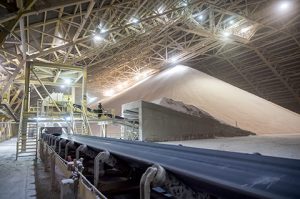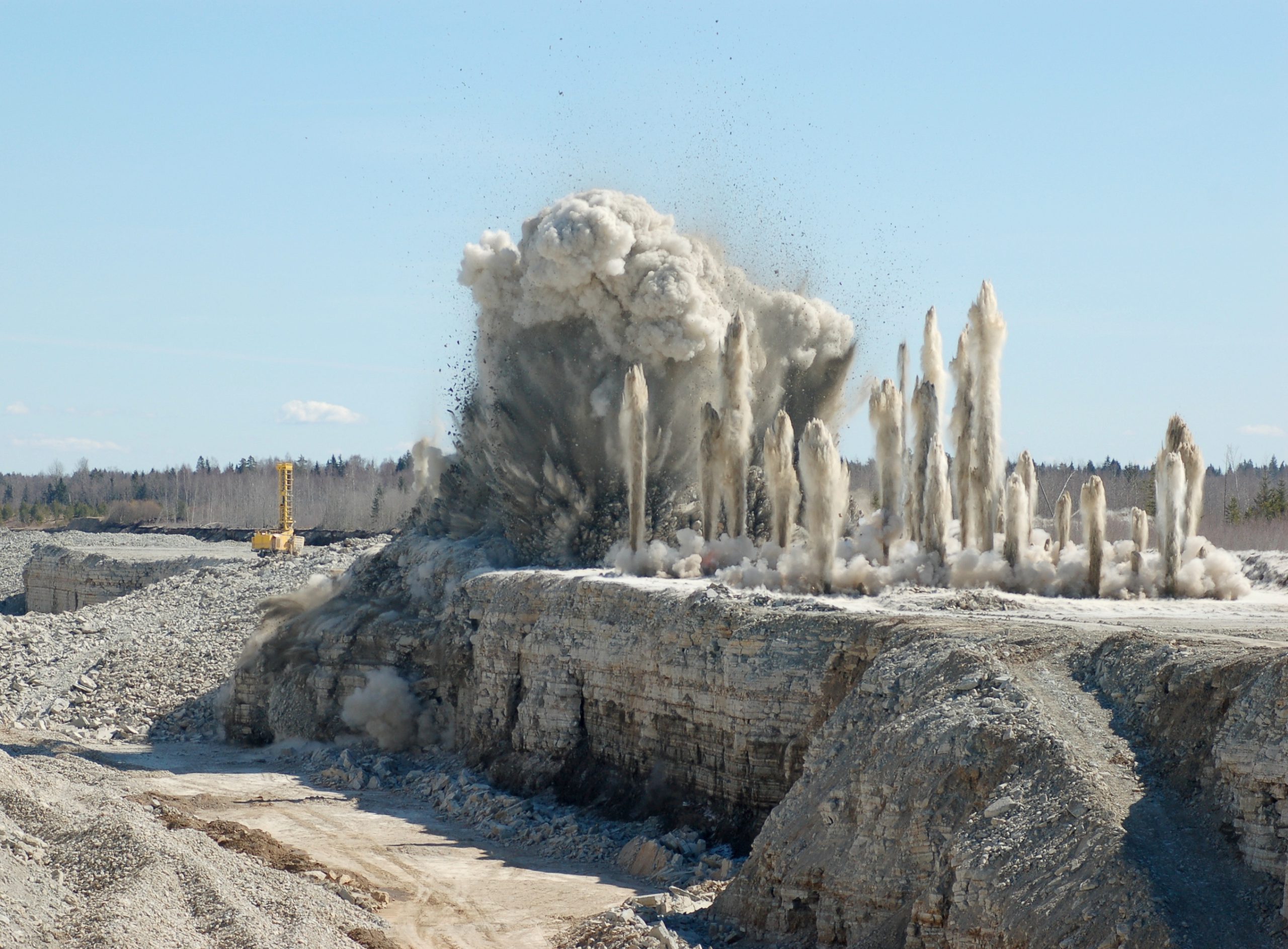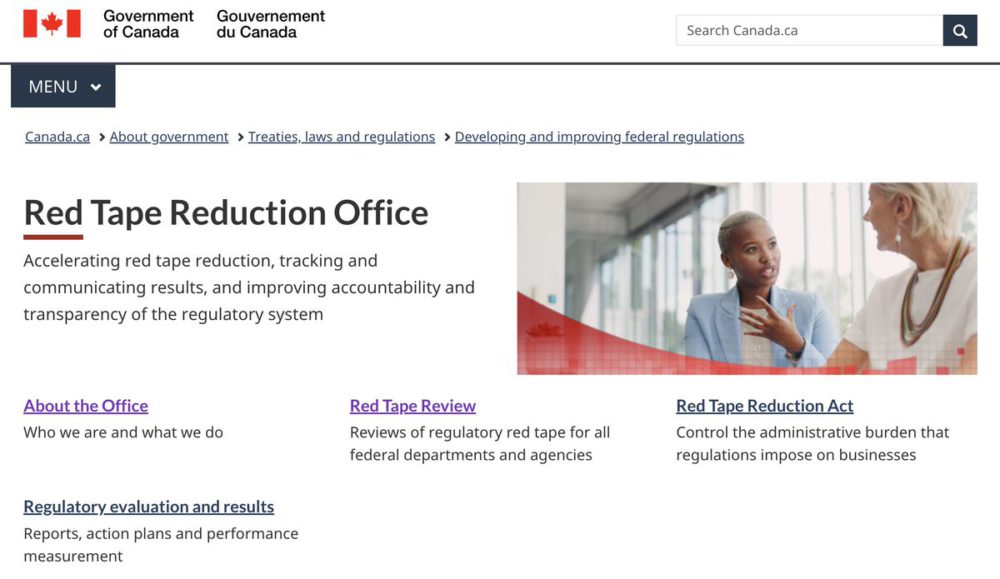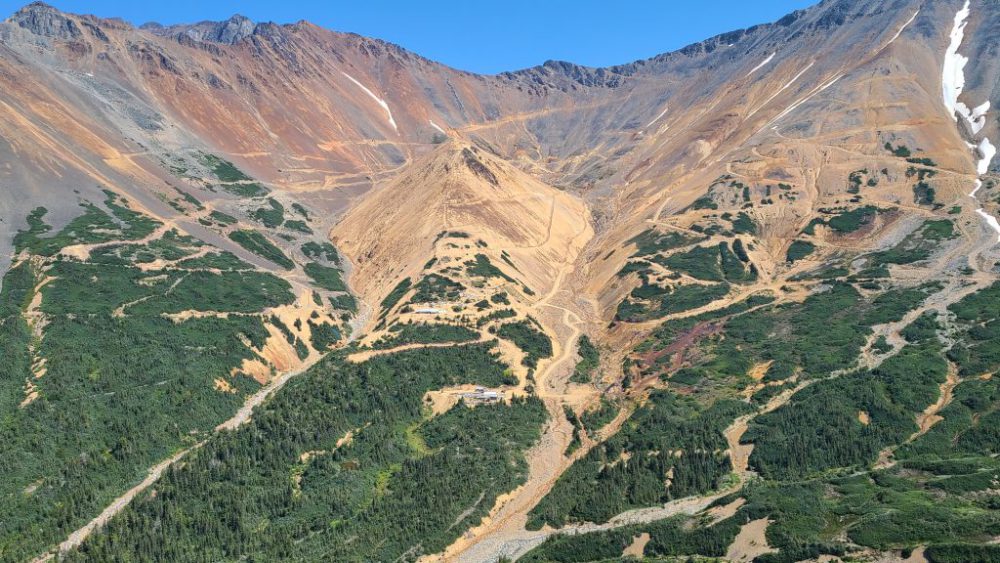Nutrien faces market challenges after mega-merger

An underground borer at one of Nutrien’s potash mines. CREDIT: NUTRIEN
The village of Allan, Sask., with a population of around 700 and located 55 km southeast of Saskatoon, bills itself as “a thriving community with a long tradition of pride and prosperity.” The well-being of the village was due, in no small part, to the underground Allan potash mine which was, until very recently, owned and operated by Potash Corp. The mine provided jobs and generated tax revenue while the company gave generously to community-building projects like the local swimming pool and Allan and District Communiplex with its hockey and curling rinks.
“The company has been a good corporate citizen,” says Mayor Les Alm. “They donated a lot of money over the years.”
In early May, Mayor Alm, his fellow councilors and a smattering local dignitaries held a sod-turning ceremony for the community’s new Emergency Services Centre and the local council was hoping for a generous corporation donation to supplement funds raised from local taxpayers. This time around, however, Potash Corp. won’t be writing a cheque.

Nutrien’s Rocanville potash facility in Saskatchewan. CREDIT: NUTRIEN
Potash Corp. ceased to exist in January when it merged with Calgary-based Agrium to create a global agricultural giant called Nutrien Ltd. with a market value of US$36 billion, more than 20,000 employees and operations in 18 countries. Apart from all that, Nutrien is the world’s largest producer of potash, thanks to its six Saskatchewan mines, it is the largest agricultural retailer and it is the number two producer of nitrogen fertilizer.
“We’ve asked Nutrien for a donation for our Emergency Services Centre,” says Mayor Alm, “but we’re still waiting.”
Employees are waiting and wondering too about job cutbacks given that CEO Chuck Magro has indicated the company is looking for $500 in synergies (read savings) by the end of 2019.
Complementary assets The mega-merger was some two years in the making and driven by the potential for cost savings and the fact that the companies have complementary assets. Potash Corp. operated five mines in Saskatchewan and one, since shut down, in New Brunswick. For its part, Agrium owned a single potash mine, but was a leading producer of nitrogen and phosphate fertilizers and operated over 1,000 farm retail centres that sold seed, liquid and dry fertilizers as well as herbicides, insecticides and fungicides.
“It made a lot of sense to bring the two companies together,” says Richard Downey, Vice-President Investor and Corporate Relations. “The size of the companies was similar. W
e both have a lot of nitrogen plants. We both have phosphate facilities. By putting the assets together, the synergies are huge when you’re buying equipment or optimizing warehouses and rail cars. We can have one purchasing program, one safety program and so on.”
For now, few observers expect any major changes in the potash mines. Earlier this year, Nutrien laid off a total of just over 600 workers at its Allan and Vanscoy mines, largely due to a shortage of rails cars that led to a build-up of inventory, but most were back on the job within a week.
Some of the mines have been producing for decades and they stand to be producing for decades to come. “The reserves are incredible once you get down to depth, which is generally around 1,000 metres,” says Downey. “They just keep going and going. Most of the mines have 40 to 50 years of proven reserves.”
Regardless of the size of their deposits, the challenge for potash producers worldwide has been that supply has outstripped demand for the past decade. Prices peaked at almost US$900 per tonne in 2008 but have languished at just over US$200 per tonne for the past several years.
The market tightened in the first quarter of 2018 and Nutrien reported sales of 3.1 million tonnes, up 11% over the first three months of 2017. Offshore prices were up 15% and North American prices rose 8%.
However, the prospects over the next couple of years are less than glowing. “Nobody questions that demand is going to grow,” says Downey. “It’s more a question of new mines under construction and how quickly they ramp up to full production.”
New potash supply The $4.1-billion K+S Bethune mine, located near the Saskatchewan community of the same name, opened in May 2017 and began shipping its product in late October 2017. More worrisome still, Swiss-based EuroChem Group is nearing completion of two greenfield potash mines in Russia – its Usolsky and Volgakaliy projects. They will have a combined capacity of 8.3 million tonnes per year once they are fully operational.
In a report for investors earlier this year, BMO Capital Markets analyst Joel Jackson predicted that output in 2018 from the K+S Bethune mine and EuroChem’s two Russian mines could more than offset the anticipated 2.5-3% growth in demand for potash. Jackson’s models predicted prices ranging from US$230 to US$255 per tonne, but cautioned that: “We recognize the risk that prices could fall closer to US$200 per tonne or below as new supply threatens industry structure.”
Some analysts anticipate that supply will outstrip demand until the mid-2020s, which has led the board of Australian mining giant BHP Billion to delay a final decision on completing its Jansen mine, located 140 km east of Saskatoon. It has been billed as the world’s largest potash project, with a projected cost of $12 to $14 billion, and the company has already spent $2.6 billion sinking production and service shafts to a depth of about 1,000 metres.
With its portfolio of six potash mines, Nutrien has the flexibility to shift production from its high-cost to its lower-cost mines, depending on the market conditions of the moment.
“Nobody wants to close a mine,’ says Brooke Dobni, professor of corporate strategy at the University of Saskatchewan’s Edwards School of Business. “They’ve got highly trained, dedicated employees. And it’s very expensive to bring a mine back into production four or five years down the road. They’d rather increase production at their most cost efficient mines and have temporary layoffs at other mines to manage supply and demand.”
Indeed, Nutrien has reported that its cost per tonne in the first quarter of 2018 was 4% lower than a year earlier because it had ramped up production at its biggest producer – the Rocanville mine, which has an operational capacity of 5.7 million tonnes per year. And in his report to investors, Jackson suggested that Nutrien could run the Rocanville mine at or near full-out for the year while scaling back other operations to as little as 40% of capacity.
Managing the supply/demand equation is just one of the challenges facing this newly created agri-giant. Finding savings of $500 million by the end of 2019 is another. “Mergers usually cost more in the first year than corporate executives expect,”
says Dobni. “You’re laying people off or firing them and they all have to be paid out. There’s a lot of costs to understanding what you have and what you need. It’s going to take four or five years before they get to $500 million savings. And they may not save much at all in the first year.”





Comments